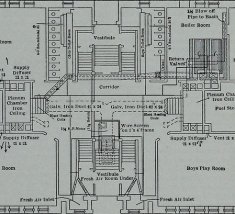A cursory review of properties will introduce the variables of thermodynamics to the student. Properties of substances are things such as mass, temperature, volume, and pressure. Properties are used to define the current state of a substance. Several more properties exist to describe substances in thermodynamics, but a stronger understanding of theory is required for their definition and application.
Properties can be intensive, if they are point properties (properties that make sense for a point) or extensive, if they depend on the amount of matter in the system. Examples of extensive properties of systems are mass of system, number of moles of a substance in a system, and overall or total volume of a system. These properties depend on how much matter of the system you measure. Examples of intensive properties are pressure, temperature, density, volume per mass, molar volume (which is volume per mole), and average molecular weight (or molecular mass). These properties are the same regardless of how you vary the amount of mass of the substance.
Properties are like the variables for substances in that their values are all related by an equation. The relationship between properties is expressed in the form of an equation which is called an equation of state. Perhaps the most famous state equation is the Ideal Gas Law. The ideal gas law relates the pressure, volume, and temperature of an ideal gas to one another.
Volume[edit]
The SI unit for volume is m3. Volume is an extensive property, but both volume per mass and molar volume are intensive properties since they do not depend on the measured mass of the system. A process during which the volume of the system remains constant is called an isochoric (or isometric) process.
Pressure[edit]
The SI unit for pressure is Pa (Pascal), which is equivalent to a . Pressure is an intensive property. A process in which pressure remains constant is called isobaric process.










